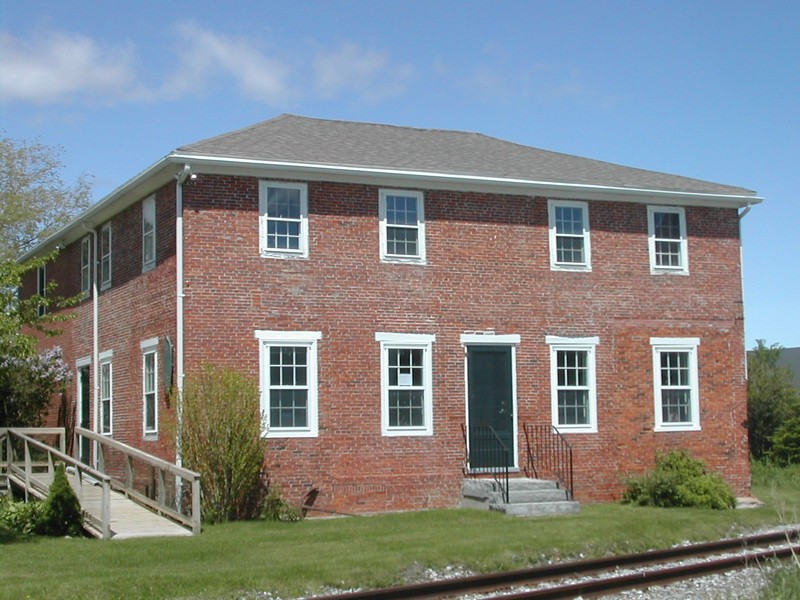Thomaston Historical Society
Introduction
Text-to-speech Audio
Images
The Thomaston Historical Society

The farmhouse after it was converted into the railroad station (in the background).

Backstory and Context
Text-to-speech Audio
General Henry Knox built the farmhouse and several other buildings when he retired to this estate, which he called “Montpelier,” after years of service in the Revolutionary forces at the command of General George Washington. When Washington became President of the United States, he appointed Knox as his first Secretary of War. Knox retired in 1796 to attend to his growing family. He moved them to Thomaston, Maine and built this estate. The only building still standing from the original group of structures is the one that houses the Thomaston Historical Society. It used to be his farmhouse – a home for the tenant farmers and other workers on the property. After the last family member died in 1854, the property had stood abandoned for several years. Knox’s beautiful mansion was razed in 1871 to make way for the new railroad. The farmhouse was converted into Thomaston’s railroad station. It was renovated to have ticket windows in the front so that people didn’t have to go inside to purchase their tickets. A covered platform was constructed near the rails. Now, the train still passes close by the museum a couple times a day. It’s loud and causes the building to tremble a bit.
Eventually the railroad station was abandoned. The property was turned over to the local chapter of the Daughters of the American Revolution (DAR). The Thomaston Historical Society was formed in 1972. At that point, the DAR decided that the historical society would be able to use the building and transferred ownership to it. The building underwent an extension renovation in the 1970s before it opened as a public museum.
Several buildings in Thomaston, Maine were included in the National Register of Historic Places Inventory Nomination Form as the “Thomaston Historic District.” The District is made up of several 19th century buildings, mostly Federal and Greek Revival architectural style homes and some businesses, that run along a two-mile stretch of Route 1 through Thomaston. The museum’s building is listed as the Thomaston Railroad Station. The form notes that it is the “surviving building from the estate of General Henry Knox, which was originally located on this site at the foot of Knox Street. Built in 1795, it was originally the cookhouse.”
The museum is open during the summer, on Tuesdays, Wednesdays, and Thursdays from 2 PM to 4 PM and on Saturdays from 1 PM to 3 PM. Admission to the museum is always free and there is someone from the historical society there to give a tour or answer questions. It is also open by appointment only through the rest of the year.
Sources
History of the Society's Building. Thomaston Historical Society. Accessed December 10, 2017. http://www.thomastonhistoricalsociety.com/FarmHouse.html.
History Valley Forge. Who Served Here? General Henry Knox. Accessed December 10, 2017. http://www.ushistory.org/valleyforge/served/knox.html.
Ashton, Charles H. Nomination Form: Thomaston Historic District. United State Department Of The Interior: National Park Service, National Register Of Historic Places Inventory. January, 1974. Accessed December 17, 2017. https://npgallery.nps.gov/pdfhost/docs/NRHP/Text/74000176.pdf.
Thomaston Historic District. Revolvy. Accessed December 21, 2017. https://www.revolvy.com/main/index.php?s=Thomaston%20Historic%20District
